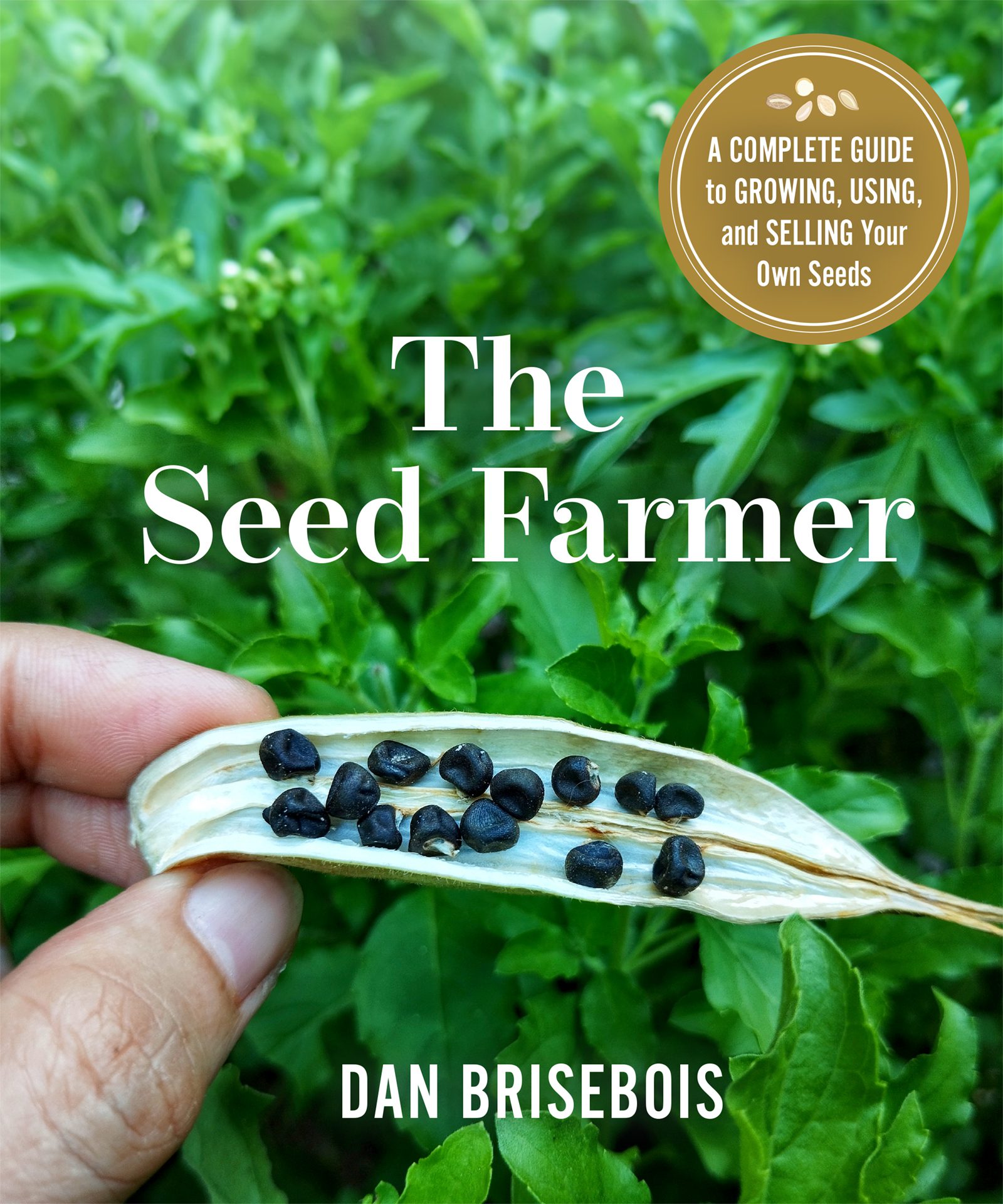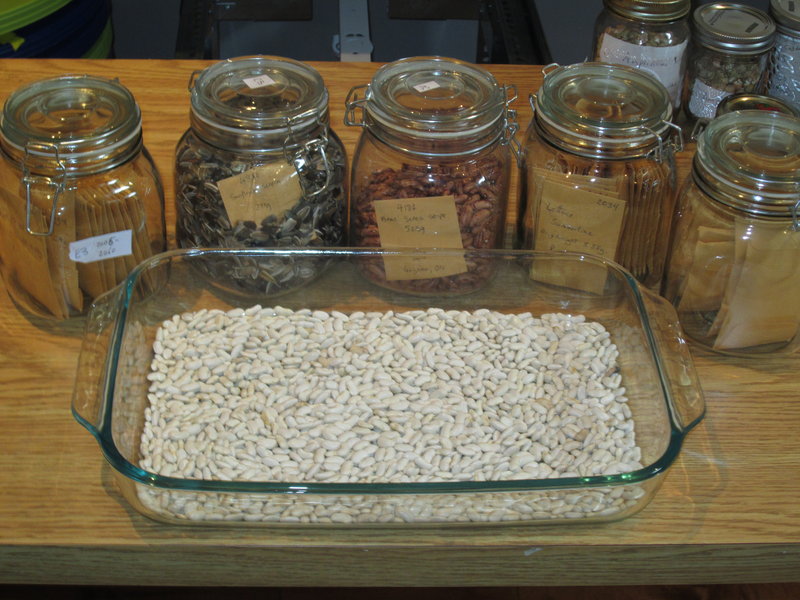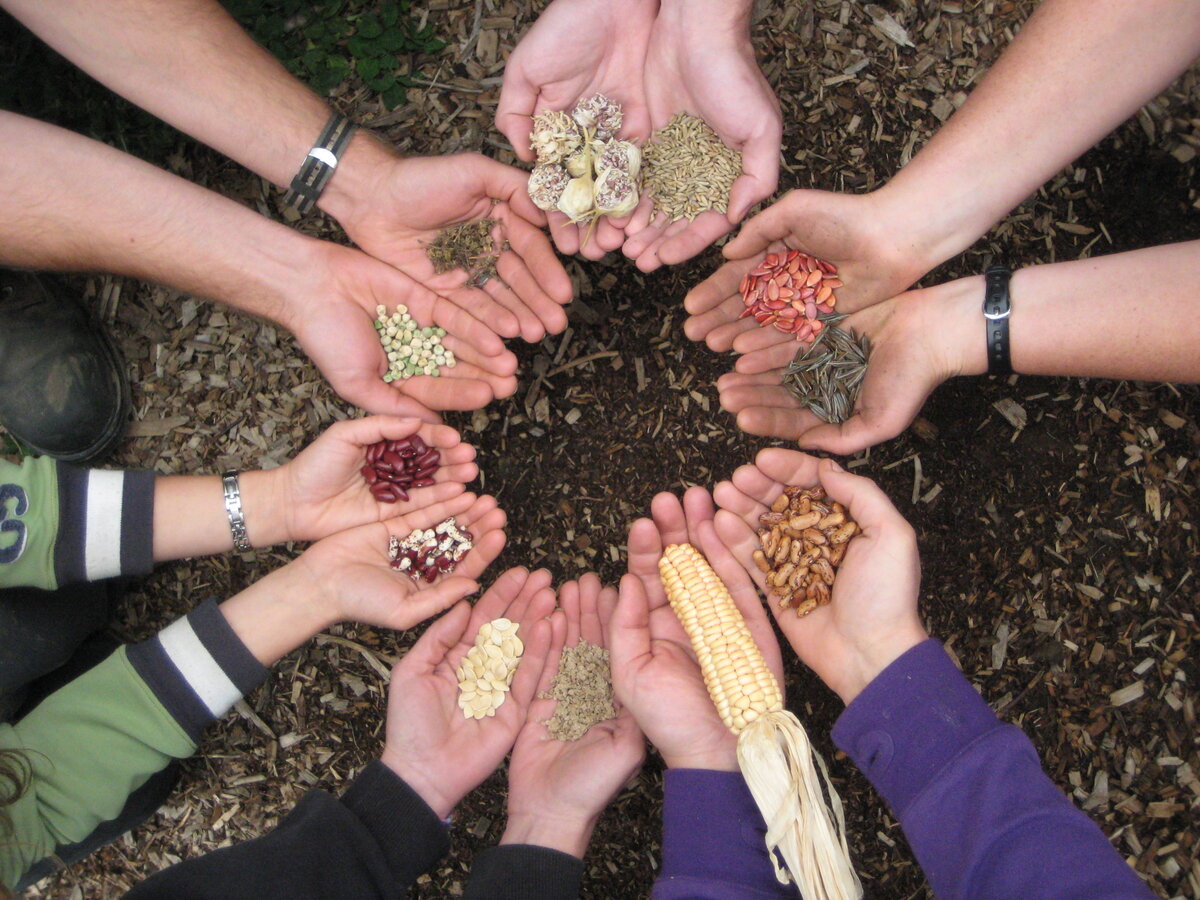Garlic Bulbils are Available!
While supplies last, we have 48 varieties of garlic bulbils available for planting this fall. Bulbils - not the large bulbs that you're probably used to, but the tiny nuggets that grow in the scapes at the tops of the plants, are a very economical way to collect and grow a vast assortment of garlic varieties!
If you plant bulbils, be prepared to wait for two full years before harvesting fully-grown garlic, but the results should be better than clove-planted garlic, and growing from bulbils is a very economical way to scale up a diverse collection of varieties. Read our article to learn more: How to Grow Garlic From Bulbils
While supplies last, we will send you a good amount (at least 10) of bulbils for 5 different varieties for $15 including shipping and handling. Please order at seeds.ca/store.
We cannot guarantee specific varieties, but if you have a favourite, please ask and we'll do our best to provide what you want.
Looking for Full-size Garlic Bulbs to Plant?
Our Canadian Seed Catalogue Index lists all the current information we have about the garlic suppliers in Canada. Check the Index or search our Seed Finder for local garlic suppliers in your area. Since this is garlic-harvesting season, this information will change, so let us know if you find any updates we've missed.
Youth Seed Stewards and Our Seed Collection
 This summer, we needed some extra help with our Canadian seed collection. We were fortunate to have a group of five Youth Seed Stewards, who inventoried new seeds into the collection, tested germination on older samples, and packaged over 2800 packets of seeds that we'll use in our 2026 programs.
This summer, we needed some extra help with our Canadian seed collection. We were fortunate to have a group of five Youth Seed Stewards, who inventoried new seeds into the collection, tested germination on older samples, and packaged over 2800 packets of seeds that we'll use in our 2026 programs.
The Seed Farmer - a new book by Dan Brisebois
 I was lucky enough to read an advance copy of the new book The Seed Farmer - A Complete Guide to Growing, Using, and Selling Your Own Seeds, and I was very impressed. Dan Brisebois, as many seed savers know, is the seed guru behind Tourne-Sol Seeds, various online seed saving courses, and excellent seed-saver media such as The Seed Farmer podcast. He's also a founder of the Eastern Canadian Organic Seed Growers Network, and has more seed cred than I can list. So I wasn't surprised that I'd be impressed by his latest book, but I was genuinely delighted to learn a few things about saving seeds that I had never read before.
I was lucky enough to read an advance copy of the new book The Seed Farmer - A Complete Guide to Growing, Using, and Selling Your Own Seeds, and I was very impressed. Dan Brisebois, as many seed savers know, is the seed guru behind Tourne-Sol Seeds, various online seed saving courses, and excellent seed-saver media such as The Seed Farmer podcast. He's also a founder of the Eastern Canadian Organic Seed Growers Network, and has more seed cred than I can list. So I wasn't surprised that I'd be impressed by his latest book, but I was genuinely delighted to learn a few things about saving seeds that I had never read before.
How to Dry Your Seeds to Perfection
 Seeds are meant to germinate when they're moist, and hibernate when they're dry. That's why it's important to dry your seeds after you harvest them. Open-air drying is the best way, and there are several methods for creating just the right conditions for perfect seed drying, using ordinary household items.
Seeds are meant to germinate when they're moist, and hibernate when they're dry. That's why it's important to dry your seeds after you harvest them. Open-air drying is the best way, and there are several methods for creating just the right conditions for perfect seed drying, using ordinary household items.
An Important Message to Our Members

Seeds of Diversity's Board of Directors are coming to you today with an important update regarding the direction of memberships.
In an effort to continue to safeguard the integrity of our organization while still maintaining democratic agency over its direction, we are reviewing and planning to update Seeds of Diversity’s governance structure and by-laws. Please read on about the suggested course of action relating to membership and quorum, and how it may affect you.
In this issue
Youth Seed Stewards and Our Seed Collection
The Seed Farmer - a new book by Dan Brisebois
How to Dry Your Seeds to Perfection
An Important Message to Our Members
Not yet a member?
An annual membership to Seeds of Diversity gives you access to our seed exchange, seed grow-out programs, and our online news.

We depend on donations to do our work.

Thank you for your support!
